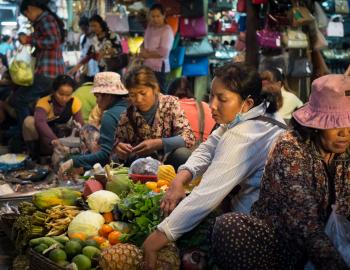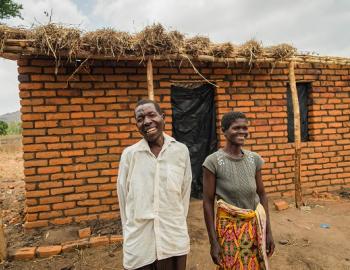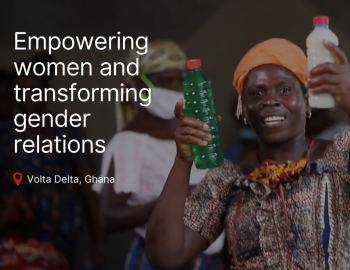POLICY BRIEF: How should the new international disaster framework address gender equality?
POLICY BRIEF: How should the new international disaster framework address gender equality?
The lack of attention to, and misunderstanding of, gender inequality prevents the effective reduction of disaster risks. This problem should be addressed in the successor agreement to the Hyogo Framework for Action – the ‘HFA2’.
This policy brief by Virginie Le Masson and Lara Langston highlights the need for specific gender-related measures to be included in the new global framework to reduce disaster risk. It argues that in spite of many international policy commitments to address gender inequality, such inequality remains pervasive. Policies are not automatically followed through in practice. The best grassroots practices do not necessarily influence policies.
Disasters can cause higher mortality rates for women than men. Women and girls are affected by gender-based violence before, during and after disasters. Disasters also exacerbate the wage gap between men and women, and among women of different ethnicities – as shown, for example, after Hurricane Katrina in 2005.
The world’s governments are due to agree the second Hyogo Framework for Action in 2015 in Sendai, Japan. The HFA2 will include specific governmental commitments on monitoring and evaluation. According to Dr Le Masson and Ms Langston, this provides an important opportunity to mainstream gender equality effectively in disaster risk reduction (DRR).
For this to happen, say the authors, policy-makers should not simply see women and girls as a homogenous, vulnerable group. They must recognise and empower existing grassroots activities where both women and men, girls and boys, have distinct roles and capacities. Such a gender-sensitive approach will enhance communities’ capacities to deal with disaster risks.
“There is a real opportunity to enable strong, gender-sensitive approaches that are already working effectively at the grassroots to flourish and grow,” said Dr Le Masson. “The mid-term review of the HFA emphasises that external institutions should facilitate – rather than control – the development of disaster risk reduction practices from the bottom-up. Governments must act on this finding when they develop the next international disaster reduction framework.”
HFA2 should also learn from the mistakes of the first Hyogo Framework period, when many governments and organisations assumed that gender equality was achieved in their countries, when in practice, it was not.
“The HFA2 should require independent institutions to monitor and evaluate DRR practice, rather than governments themselves. National monitoring processes should better reflect grassroots DRR practices, and should systematically collect gender-disaggregated data of disaster losses, vulnerabilities and capacities,” said Dr Le Masson.
Download the policy brief: How should the new international disaster framework address gender equality?
For interview or more information, contact:
Virginie Le Masson, Research Officer, ODI: +44 (0) 20 79228244, v.lemasson@odi.org.uk
Mairi Dupar, Global Public Affairs Coordinator, CDKN: +44 (0) 7921 088475, m.dupar@odi.org.uk
Also posted in Spanish
Image of woman drawing water from a well, Sudan: courtesy Panos.



